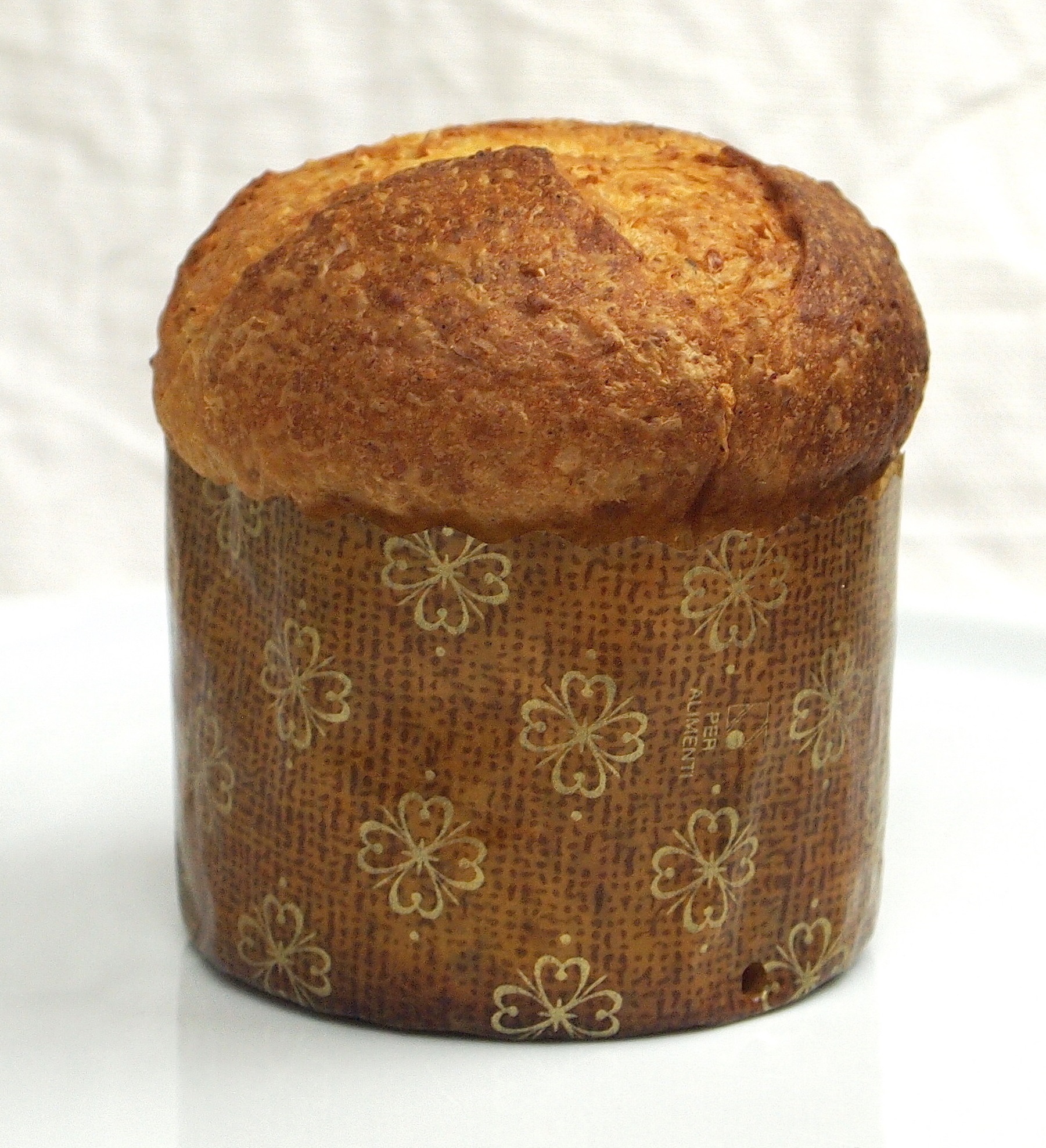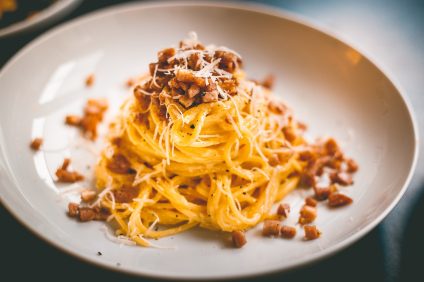To make this great product that requires great skills in high pastry and bakery you need a very strong and fragrant mother yeast, two full days of free time, a lot, but a lot of patience, a lot of flour experience; it is necessary to know perfectly the temperatures of the products and the working and leavening environment, to have a place where there is at least 65% humidity for the final leavening, to have a planetary mixer, because it is not possible to work vigorously by hand so at along a 2 kg dough (making smaller pieces is not convenient, the working and leavening times are almost the same).
Time of realization: 2 days
Degree of difficulty (1 to 5): 5
Ingredients for 2 pieces:
1st dough:
420 g of strong flour
150 g of sugar
160 g of mother yeast
150 g of cold water
150 g of yolks
140 g of butter
To be prepared on the evening of the 1st dough:
200 g of raisins
2st dough:
1st dough
150 g of strong flour
100 g of yolks
100 g of sugar
30 g of honey
10 g salt
a vanilla bean from Madagascar
180 g of butter
300 g of candied orange
100 g of candied cedar
Procedure for making the Panettone
1) Before proceeding, the yeast must be refreshed at least three times at a temperature of 26 ° C, so that it gains strength and releases a fresh and soft scent of bread; the alveolation must be homogeneous and soft, so as to make it look like a cloud. You shouldn't smell any acid or vinegar and it shouldn't be too sticky.
2) For each refreshment it will take at least 3-4 hours, the important thing is that each time it is completely leavened, that is, that it has more than doubled in volume.

3) There are 3 methods to start kneading the dough:
a) Put the yeast in the bowl of the planetary mixer and dissolve it in the water with one hand, add the sugar, ⅔ of the egg yolks and operate the dough hook at high speed, so as to mix everything and start to incorporate air. A froth will form. Add the flour all together. Work at minimum speed and for a short time, so as not to fully develop the gluten and thus obtain an opaque and sticky mass. Incorporate the remaining egg yolks in 2 times, and work a little.
b) Another method: put the flour, yeast and sugar in the mixer, operate at minimum and add the water a little at a time. Add the egg yolks 3-4 times.
c) A third method, much less academic and which could arouse many perplexities but also irritation among the "master" bakers, is the opposite procedure compared to the previous ones: it is always said to put the fats at the end because they do not allow the formation of the gluten mesh ... well, starting with ¾ of the dose of soft butter, a part of flour and then adding the liquids, alternating with the remaining butter and flour, the dough will be exactly as elastic as that obtained with the "classic" method.
Before shouting scandal and accusing me of blasphemy, try it.
If you adopt one of the first two methods, make the butter soft while kneading, if necessary put it in the microwave for a few seconds, making sure it does not exceed the temperature of 18-19 ° C.
4) During processing, be very careful that the walls of the planetary mixer do not heat up, compromising the "life" of the yeast and the destruction of the gluten mesh. If you are not sure of the temperature of the dough, stop the machine and check the inside of the dough with a probe thermometer, which must never exceed 26 ° C.
5) Add the butter, at first a small piece, then bigger and bigger pieces, and do everything quickly, in order to work the mass as little as possible. Always carefully check the internal temperature of the dough.
The working time of this first mix will be around 20-25 minutes.
6) Remove it from the planetary mixer, work it on the work surface or between your hands in order to give it a homogeneous, very soft and sticky appearance. Put it in a large bowl, with a tarot give it a sphere shape, cover it with a cloth and place it in the lukewarm for the whole night, or approximately for 8-10 hours. The temperature must be between 26 and 28 ° C.
I adopt a very "homemade" but effective method, to ensure the right warmth and its constancy over time: I put the bowl in an electric blanket folded like a sandwich, I adjust the temperature as I want and even for 12 hours I can afford to stay calm.
7) Put the raisins in a bowl with boiling water for 15 minutes: this serves to soften it, but also to eliminate the sulfur dioxide and paraffin with which it is treated. It can also be soaked in rum, to give it more aroma. Drain it without squeezing it and leave it in the pass all night without covering it.
8) The next morning the pasta must have filled the bowl and formed a well elastic and fragrant dome, tripling the initial volume: put it in the mixer, add the flour all together and work at very low speed, until the flour is absorbed.
9) Add a little egg yolk at a time alternating with sugar and honey.
10) Check the temperature even more carefully in this phase: it must never exceed 26 ° C. This is a delicate phase, perhaps the most dangerous for the success of the dessert, and will determine the success of your work. If it gets hot even a little, stop immediately and spread the dough to let it cool, you can even place the whole bowl in the refrigerator; wait a few minutes and slowly resume work until the dough begins to detach from the walls.
11) Add the salt a little at a time and the vanilla seeds.
12) Finally add the butter as you did with the first dough: only a piece then more and more quantities. It is essential to work the pasta a little in these last steps.
13) Always turning the planetary mixer at minimum speed, gradually add the raisins and candied fruit, work as little as possible and finish the work by hand and quickly to distribute everything evenly.
The working time used for this second mix will be around 25-30 minutes. Place the dough in a bowl, cover with a cloth and let it rest at room temperature for an hour: this phase is called "puntatura".
14) Divide the dough into two parts (this is called "size"), and do the "pirlatura", ie roll them with the palms of your hands on the work surface, making them slide from one hand to the other and making them smooth and pulled together. surface.
15) Prepare two cups with a capacity of one kilo each.

16) After a few minutes, turn the dough on themselves to make them homogeneous and make another "pirlatura".
17) Carefully place the two doughs in the cups and place everything under the electric blanket at a temperature of 28-30 ° C.
A further "tip" would be to get a sheet of coated wire mesh, the kind used to make plants climb: you can shape it according to the shape of the cups and place it on top of them, in order to lift the electric blanket and prevent it from touching the dough.
18) After at least six hours the masses should have reached one centimeter from the edge and the center should have exceeded it by even two centimeters, forming a dome.
19) Turn on the oven at 175 ° C.
20) Take the panettone and make a cross cut on their surface with the help of a scalpel, brush the cut with melted butter. Then, if you want to make the "scarpatura", lift these triangles from the tip and always with a scalpel cut the dough under this surface, lay these edges outwards, brush the entire top of the panettone with melted butter then return the triangles to their original position .
21) Bake immediately on the lowest level of the oven and cook for 50-55 minutes, depending on your oven. Pay attention to the color of the surface during the first 5-10 minutes, covering with aluminum foil or baking paper to prevent it from burning.
22) At the end of the cooking time, check the internal temperature of the panettone with a probe thermometer which must not exceed 92 ° C. If the bottom flour is not cooked, the product soon sours and is attacked by molds, if the top one will dry out too much and the panettone will risk being dry and burnt.
23) As soon as they are taken out of the oven, skewer the base of the panettone sideways with the special skewers or with two knitting needles 3.5 and turn them upside down, placing them on the sides of two chairs or hanging them with ropes. Leave them for 12 hours to cool and settle upside down, "upside down".
24) Spray the inside of polypropylene bags with 95 ° pure alcohol for food before putting the panettone in and enjoy them after at least a week. They also last two months, but I've never been able to keep them for so long ...
variants:
For the version with sour cherries in syrup, instead of candied fruit and raisins I use 800 g of sour cherries well drained from the syrup.
For the pear and chocolate version I use 200 g of dark chocolate chips and 300 g of candied pears.
The recipe was made by Robert Saluzzi.








